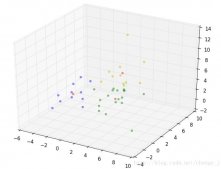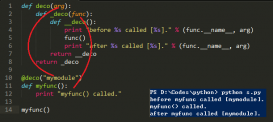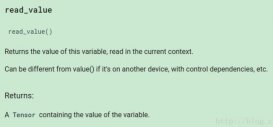此处需要pip install pretrainedmodels
|
1
2
3
4
5
6
7
8
9
10
11
12
13
14
15
16
17
18
19
20
21
22
23
24
25
26
27
28
29
30
31
32
33
34
35
36
37
38
39
40
41
42
43
44
45
46
47
48
49
50
51
52
53
54
55
56
57
58
59
60
61
62
63
64
65
66
67
68
69
70
71
72
73
74
75
76
77
78
79
80
81
82
83
84
85
86
87
88
89
90
91
92
93
94
95
96
97
98
99
100
101
102
103
104
105
106
107
108
109
110
111
112
113
114
115
116
117
118
119
120
121
122
123
124
125
126
127
128
129
130
131
132
133
134
135
136
137
138
139
140
141
142
143
144
145
146
147
148
149
150
151
152
153
154
155
156
157
158
159
160
161
162
163
164
165
166
167
168
169
170
171
172
173
174
175
176
177
178
179
180
181
182
183
184
185
186
187
188
189
190
191
192
193
194
195
196
197
198
199
200
201
202
203
204
205
206
207
208
209
210
211
212
213
214
215
216
217
218
219
220
221
222
223
224
225
226
227
228
229
230
231
232
233
234
235
236
237
238
239
240
241
242
243
244
245
246
247
248
249
250
251
252
253
254
255
256
257
258
259
260
261
262
263
264
265
266
267
268
269
270
271
272
273
274
275
276
277
278
279
280
|
"""Finetuning Torchvision Models"""from __future__ import print_function from __future__ import divisionimport torchimport torch.nn as nnimport torch.optim as optimimport numpy as npimport torchvisionfrom torchvision import datasets, models, transformsimport matplotlib.pyplot as pltimport timeimport osimport copyimport argparseimport pretrainedmodels.models.resnext as resnextprint("PyTorch Version: ",torch.__version__)print("Torchvision Version: ",torchvision.__version__)# Top level data directory. Here we assume the format of the directory conforms # to the ImageFolder structure#data_dir = "./data/hymenoptera_data"data_dir = "/media/dell/dell/data/13/"# Models to choose from [resnet, alexnet, vgg, squeezenet, densenet, inception]model_name = "resnext"# Number of classes in the datasetnum_classes = 171# Batch size for training (change depending on how much memory you have)batch_size = 16# Number of epochs to train for num_epochs = 1000# Flag for feature extracting. When False, we finetune the whole model, # when True we only update the reshaped layer paramsfeature_extract = False# 参数设置,使得我们能够手动输入命令行参数,就是让风格变得和Linux命令行差不多parser = argparse.ArgumentParser(description='PyTorch seresnet')parser.add_argument('--outf', default='/home/dell/Desktop/zhou/train7', help='folder to output images and model checkpoints') #输出结果保存路径parser.add_argument('--net', default='/home/dell/Desktop/zhou/train7/resnext.pth', help="path to net (to continue training)") #恢复训练时的模型路径args = parser.parse_args()def train_model(model, dataloaders, criterion, optimizer, num_epochs=25,is_inception=False):#def train_model(model, dataloaders, criterion, optimizer, num_epochs=25,scheduler, is_inception=False): since = time.time() val_acc_history = [] best_model_wts = copy.deepcopy(model.state_dict()) best_acc = 0.0 print("Start Training, resnext!") # 定义遍历数据集的次数 with open("/home/dell/Desktop/zhou/train7/acc.txt", "w") as f1: with open("/home/dell/Desktop/zhou/train7/log.txt", "w")as f2: for epoch in range(num_epochs): print('Epoch {}/{}'.format(epoch+1, num_epochs)) print('*' * 10) # Each epoch has a training and validation phase for phase in ['train', 'val']: if phase == 'train': #scheduler.step() model.train() # Set model to training mode else: model.eval() # Set model to evaluate mode running_loss = 0.0 running_corrects = 0 # Iterate over data. for inputs, labels in dataloaders[phase]: inputs = inputs.to(device) labels = labels.to(device) # zero the parameter gradients optimizer.zero_grad() # forward # track history if only in train with torch.set_grad_enabled(phase == 'train'): # Get model outputs and calculate loss # Special case for inception because in training it has an auxiliary output. In train # mode we calculate the loss by summing the final output and the auxiliary output # but in testing we only consider the final output. if is_inception and phase == 'train': # From https://discuss.pytorch.org/t/how-to-optimize-inception-model-with-auxiliary-classifiers/7958 outputs, aux_outputs = model(inputs) loss1 = criterion(outputs, labels) loss2 = criterion(aux_outputs, labels) loss = loss1 + 0.4*loss2 else: outputs = model(inputs) loss = criterion(outputs, labels) _, preds = torch.max(outputs, 1) # backward + optimize only if in training phase if phase == 'train': loss.backward() optimizer.step() # statistics running_loss += loss.item() * inputs.size(0) running_corrects += torch.sum(preds == labels.data) epoch_loss = running_loss / len(dataloaders[phase].dataset) epoch_acc = running_corrects.double() / len(dataloaders[phase].dataset) print('{} Loss: {:.4f} Acc: {:.4f}'.format(phase, epoch_loss, epoch_acc)) f2.write('{} Loss: {:.4f} Acc: {:.4f}'.format(phase, epoch_loss, epoch_acc)) f2.write('\n') f2.flush() # deep copy the model if phase == 'val': if (epoch+1)%5==0: #print('Saving model......') torch.save(model.state_dict(), '%s/inception_%03d.pth' % (args.outf, epoch + 1)) f1.write("EPOCH=%03d,Accuracy= %.3f%%" % (epoch + 1, 100*epoch_acc)) f1.write('\n') f1.flush() if phase == 'val' and epoch_acc > best_acc: f3 = open("/home/dell/Desktop/zhou/train7/best_acc.txt", "w") f3.write("EPOCH=%d,best_acc= %.3f%%" % (epoch + 1,100*epoch_acc)) f3.close() best_acc = epoch_acc best_model_wts = copy.deepcopy(model.state_dict()) if phase == 'val': val_acc_history.append(epoch_acc) time_elapsed = time.time() - since print('Training complete in {:.0f}m {:.0f}s'.format(time_elapsed // 60, time_elapsed % 60)) print('Best val Acc: {:4f}'.format(best_acc)) # load best model weights model.load_state_dict(best_model_wts) return model, val_acc_historydef set_parameter_requires_grad(model, feature_extracting): if feature_extracting: for param in model.parameters(): param.requires_grad = Falsedef initialize_model(model_name, num_classes, feature_extract, use_pretrained=True): # Initialize these variables which will be set in this if statement. Each of these # variables is model specific. model_ft = None input_size = 0 if model_name == "resnet": """ Resnet18 """ model_ft = models.resnet18(pretrained=use_pretrained) set_parameter_requires_grad(model_ft, feature_extract) num_ftrs = model_ft.fc.in_features model_ft.fc = nn.Linear(num_ftrs, num_classes) input_size = 224 elif model_name == "alexnet": """ Alexnet """ model_ft = models.alexnet(pretrained=use_pretrained) set_parameter_requires_grad(model_ft, feature_extract) num_ftrs = model_ft.classifier[6].in_features model_ft.classifier[6] = nn.Linear(num_ftrs,num_classes) input_size = 224 elif model_name == "vgg": """ VGG11_bn """ model_ft = models.vgg11_bn(pretrained=use_pretrained) set_parameter_requires_grad(model_ft, feature_extract) num_ftrs = model_ft.classifier[6].in_features model_ft.classifier[6] = nn.Linear(num_ftrs,num_classes) input_size = 224 elif model_name == "squeezenet": """ Squeezenet """ model_ft = models.squeezenet1_0(pretrained=use_pretrained) set_parameter_requires_grad(model_ft, feature_extract) model_ft.classifier[1] = nn.Conv2d(512, num_classes, kernel_size=(1,1), stride=(1,1)) model_ft.num_classes = num_classes input_size = 224 elif model_name == "densenet": """ Densenet """ model_ft = models.densenet121(pretrained=use_pretrained) set_parameter_requires_grad(model_ft, feature_extract) num_ftrs = model_ft.classifier.in_features model_ft.classifier = nn.Linear(num_ftrs, num_classes) input_size = 224 elif model_name == "resnext": """ resnext Be careful, expects (3,224,224) sized images """ model_ft = resnext.resnext101_64x4d(num_classes=1000, pretrained='imagenet') set_parameter_requires_grad(model_ft, feature_extract) model_ft.last_linear = nn.Linear(2048, num_classes) #pre='/home/dell/Desktop/zhou/train6/inception_009.pth' #model_ft.load_state_dict(torch.load(pre)) input_size = 224 else: print("Invalid model name, exiting...") exit() return model_ft, input_size# Initialize the model for this runmodel_ft, input_size = initialize_model(model_name, num_classes, feature_extract, use_pretrained=True)# Print the model we just instantiated#print(model_ft) data_transforms = { 'train': transforms.Compose([ transforms.RandomResizedCrop(input_size), transforms.RandomHorizontalFlip(), transforms.ToTensor(), transforms.Normalize([0.485, 0.456, 0.406], [0.229, 0.224, 0.225]) ]), 'val': transforms.Compose([ transforms.Resize(input_size), transforms.CenterCrop(input_size), transforms.ToTensor(), transforms.Normalize([0.485, 0.456, 0.406], [0.229, 0.224, 0.225]) ]),}print("Initializing Datasets and Dataloaders...")# Create training and validation datasetsimage_datasets = {x: datasets.ImageFolder(os.path.join(data_dir, x), data_transforms[x]) for x in ['train', 'val']}# Create training and validation dataloadersdataloaders_dict = {x: torch.utils.data.DataLoader(image_datasets[x], batch_size=batch_size, shuffle=True, num_workers=4) for x in ['train', 'val']}# Detect if we have a GPU availabledevice = torch.device("cuda:1" if torch.cuda.is_available() else "cpu")#we='/home/dell/Desktop/dj/inception_050.pth'#model_ft.load_state_dict(torch.load(we))#diaoyong# Send the model to GPUmodel_ft = model_ft.to(device)params_to_update = model_ft.parameters()print("Params to learn:")if feature_extract: params_to_update = [] for name,param in model_ft.named_parameters(): if param.requires_grad == True: params_to_update.append(param) print("\t",name)else: for name,param in model_ft.named_parameters(): if param.requires_grad == True: print("\t",name)# Observe that all parameters are being optimizedoptimizer_ft = optim.SGD(params_to_update, lr=0.01, momentum=0.9)# Decay LR by a factor of 0.1 every 7 epochs#exp_lr_scheduler = lr_scheduler.StepLR(optimizer_ft, step_size=30, gamma=0.95)# Setup the loss fxncriterion = nn.CrossEntropyLoss()print(model_ft)# Train and evaluatemodel_ft, hist = train_model(model_ft, dataloaders_dict, criterion, optimizer_ft, num_epochs=num_epochs, is_inception=False) |
以上这篇关于ResNeXt网络的pytorch实现就是小编分享给大家的全部内容了,希望能给大家一个参考,也希望大家多多支持服务器之家。
原文链接:https://blog.csdn.net/weixin_40123108/article/details/89682534












